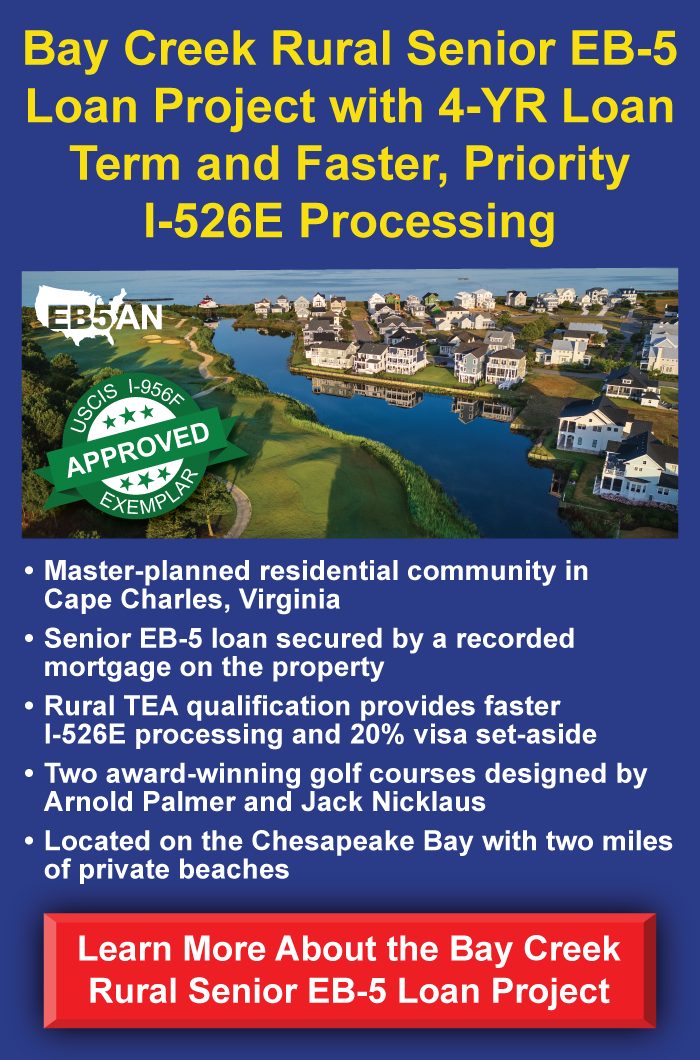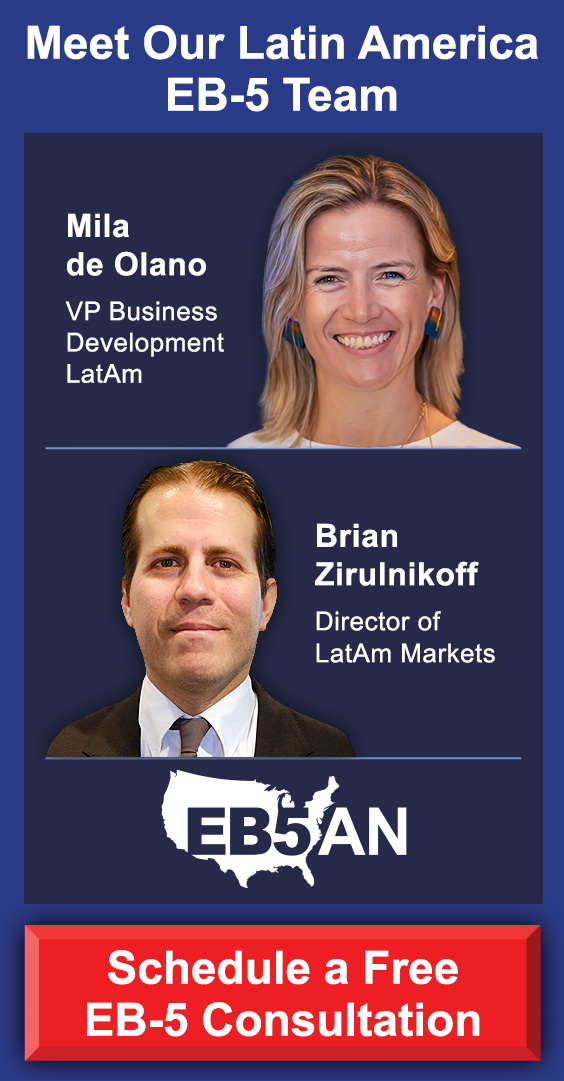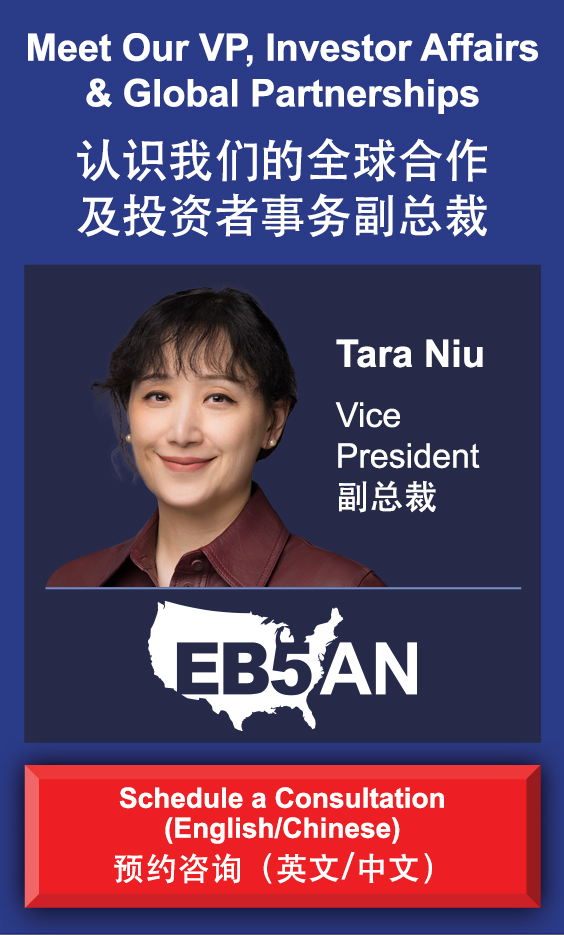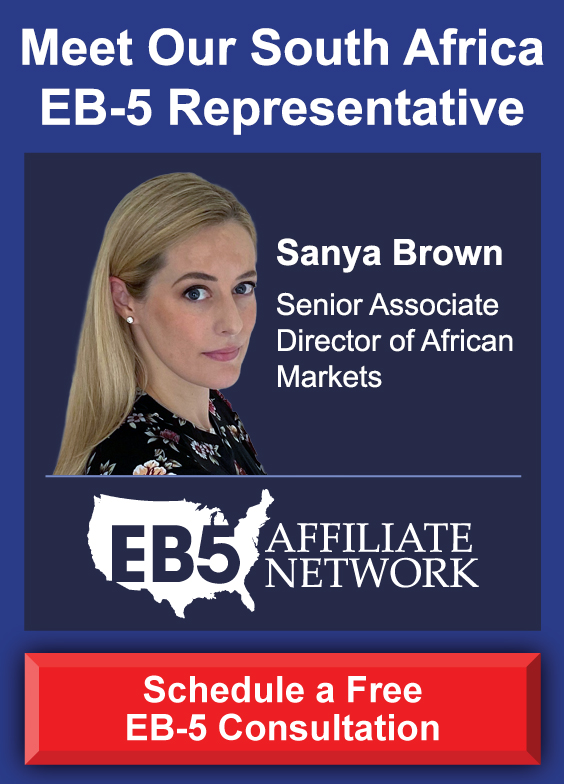As an Indian national who has lived and worked in the U.S. for several years, I can honestly say that there’s no better place than America to build your life. The amazing career and academic opportunities made it an easy decision for me and my family to pursue our permanent U.S. Green Cards.
But for anyone who wants to become a permanent resident of the U.S., the options are very limited. The EB-5 Immigrant Investor Program was by far the fastest and most convenient option for us. And I am happy to have invested in EB5AN’s Rocky River rural EB-5 project, which I consider the very best EB-5 offering on the market right now.
In this post, I’ll explain my criteria for choosing an EB-5 project, an immigration attorney, and a regional center. I’m confident that if you follow these steps, you’ll be able to find an EB-5 project you feel comfortable with and that will result in both Green Cards and a return on your principal.
Let’s start with my background and why I chose EB-5 instead of other immigration paths.
Watch Deepak’s Full Interview
Watch Deepak’s Interview Highlights
Read the Full Transcript of Deepak’s Interview
My Story and Why I Made an EB-5 Investment
How I Found My Immigration Attorney and Prepared the Source-of-Funds Documents
My Strategy For Choosing an EB-5 Project and Why I Invested with EB5AN
Why Rocky River Stood Out From Other Rural Projects
My Top Advice For Other EB-5 Investors
My Story and Why I Made an EB-5 Investment
I grew up in India, and now I live in California with my wife and child. We have been on H-1B status for years, and our I-140 is approved. Even with that, the Green Card wait is very long. Travel is also hard. Each trip means stamping, planning, and worry. Every international trip feels like a risk, and that stress grows over time. We wanted a life with fewer restrictions. We wanted to travel freely in and out of the United States and not feel tied down by rules around work and travel.
That is what pushed us to look at EB-5. It felt clear. It felt simple. It gave us a straight path toward permanent residency. The biggest thing for us was certainty. We wanted to know that if we invested the time and money, there would be a predictable outcome. With EB-5, we finally felt that.
Work freedom was also huge. On H-1B, you are tied to one employer. Any change comes with risk. You cannot easily explore new roles or new companies. With EB-5, you are not tied to any employer at all. That freedom made a big difference for us. It felt like a real upgrade for our future in the United States.
We also looked at other visa categories. EB-1A came up, along with other employment routes. But EB-1A is very subjective. You must build a profile, collect proofs, and spend a lot of time shaping your case. Even then, nothing is guaranteed. Some of the employment options also require leaving the country for processing, which did not work well for our family.
We compared all the options quickly. We listed the pros and cons, and we were honest about what fit our situation right now. EB-5 stood out. It was clear and direct. It matched our goals. That is why we decided to commit to it fully.
How I Found My Immigration Attorney and Prepared the Source-of-Funds Documents
Once we decided EB-5 was the right path, I moved straight into two parallel tracks. One was finding the right project, but the more urgent one was finding the right immigration attorney. I started with my own research. Soon, I had eight or nine names. I narrowed that group to five attorneys and spoke with all of them. All five were strong. Each had a slightly different approach, and each one had handled a large number of EB-5 cases. What mattered most was how their style matched mine. Some were more personal and subjective; others were more structured and by-the-book. I needed someone who worked the way I worked.
After those calls, I chose Joey Barnett. Three of the attorneys were close contenders, but Joey’s profile and his working style matched me best. His EB-5 track record was very strong. He had handled a high volume of petitions, he worked with the same types of regional center projects I was interested in, and he had the kind of EB-5 advisory experience I was looking for. Those were my three main filters: a real EB-5 track record, experience with the types of projects I was considering, and meaningful involvement in the EB-5 advisory world. Once I applied those filters, it came down to fit. I felt very comfortable with Joey, and I could see how his style aligned with mine. Even though the others were also excellent, that alignment made the difference. Since then, the experience has been very smooth.
When we began the source-of-funds process, Joey and his team started with an orientation call. They explained what to expect, and then followed up with a very clear set of email instructions. I had already done some prep work, but I underestimated how much time it takes to gather everything. Source-of-funds work is basically assembling every document that shows how you earned your money. You collect bank statements, pay stubs, tax returns, anything that supports the story of how the funds were earned. Some items are simple. Bank statements are easy. The difficult part is the older items. Seven-year-old tax returns, for example, or old pay stubs from a job you no longer have access to. Those took the longest. Sometimes you need to make ad hoc requests to former employers because you no longer have login access to those old portals. That was one of the surprises. I didn’t expect that I would need older pay records that went back beyond my current job.
For the most part, the work is about staying organized. You follow the checklist. You go through it item by item. When one document is done, you cross it off. You send it to the team. Then they review it and come back with clarifying questions or requests for additional evidence. It’s iterative, and it takes patience. For us, it took about six weeks to get to around 99% completion. That timeline included a one- to two-week break because we were traveling. If you stay fully focused and don’t have travel interruptions, it could be faster. But you should expect a lot of back-and-forth. Nothing is unclear; it’s just time-consuming gathering everything.
If I had to point to one unexpected part of the process, it was how much work the older documents required. Old pay stubs were the biggest surprise. When you leave an employer, you usually lose access to the system where all those documents were stored. So you must contact them manually. It’s not hard, but it does take extra steps and extra time. Everything else was straightforward once I got into a rhythm.
The full timeline looked like this: two to three weeks interviewing attorneys, then around six weeks assembling the source-of-funds documents. The attorney search can go much faster if you prepare well. Regional centers will give you referrals, but you still need to research each attorney. That means reading their profiles, checking how many EB-5 cases they have filed, and understanding how they approach EB-5 work. Then you need to actually speak with them. Scheduling those calls also takes time. That part alone took me about three weeks.
Once the attorney was selected, the document collection started. If we had not been traveling, we might have finished in closer to five weeks. But with everything combined, the total progression from first attorney call to being ready to file took us around two months.
If I were giving advice to a new investor, the first thing would be to start prep work early. Gather every document you can in advance, especially older tax returns or anything tied to past employers. The second piece of advice is to finalize your attorney as early as possible. The sooner you lock in your attorney, the sooner you can begin the source-of-funds work. And the third point is not to underestimate how long source-of-funds work takes. Even with a good attorney guiding you, it is still a large amount of documentation. Starting early makes the entire process smoother.
My Strategy For Choosing an EB-5 Project and Why I Invested with EB5AN
When I first started looking at EB-5, I realized there were really two tracks: the attorney and source-of-funds work, and then finding the right project. I focused first on understanding the EB-5 project side. I read a lot, and I learned very quickly that there are two main paths: going through a regional center or trying the direct route. For me, with a full-time job, the regional center path made more sense. It felt smoother, and it offered more structure and transparency. I also wanted regular updates, and the regional center route made that easier. Because of that, I reached out to four different regional centers.
As I started speaking with each regional center, I began comparing them. You notice very fast that each one has strong points and weak points. I tried to focus on what really mattered for my situation. For me, the first thing was track record. I wanted a regional center that had done real projects at scale and had approvals to show for it. The other big point was the type of project they offered. That mattered a lot because it had to align with my own background, my goals, and my circumstances.
A big part of that was the rural versus urban choice. Coming from India, I knew that going the urban or HUA route would mean a long wait. I heard many stories of people waiting years. My family wanted a faster timeline for the Green Card, so the rural category stood out. Once the new rules came in 2022 with the reserved visas—about 20% for rural—the rural route became even more obvious for us. So that became the main direction.
When we compared the regional centers, we looked closely at transparency, documentation, and communication. Some regional centers were fine, but they shared only sample projects or very limited information unless I asked a long list of questions. Every time I asked a question, they shared one more document. It never felt complete. With EB5AN, it was the opposite. The first time I spoke with Ahmed and then later with Sam, they shared a full project link that included everything: the job creation report, the guaranties, the financials, the approvals—every detail. I didn’t have to chase anyone for documents. Everything was clearly presented. That stood out.
The communication also made a difference. EB-5 was new to me, so I needed guidance, not a sales pitch. With EB5AN, the conversations helped me understand the rural versus urban distinctions and how to think about different risk points. When I spoke with other regional centers, it felt more like they wanted to lock me in quickly. They didn’t spend time explaining things. They didn’t walk me through the cautions. With EB5AN, I learned a lot. Ahmed even walked me through how to understand the capital stack, the pros and cons, and how each piece fits together. That helped me a lot, because I was navigating all of this for the first time.
Why Rocky River Stood Out From Other Rural Projects
Once we settled on the rural category, the next step was choosing the actual project. There were many rural projects out there: hotel projects, resort projects, housing, and other types. We were leaning toward housing from the start. It felt straightforward. People need homes, and the demographics in many places are shifting. Housing tends to hold up better during different economic cycles. Travel and leisure projects can have very good returns, but they are cyclical. Travel is discretionary. Housing is not. So that shaped our preference.
Rocky River became the main choice for a few clear reasons. The first was the economic fundamentals. The project serves a strong target group through the Cresswind brand. These communities focus on active adults, and that made sense to me. It is a specific demographic with real demand. The second point was the developer. Kolter had already built many projects of this type. This was not a new experiment. It was a repeatable model with a strong track record. That gave us confidence. We also looked at the financials. Kolter had scale, experience, and many similar large projects. Adding in the guaranty made it even stronger for us.
Once we chose Rocky River, the process with the EB5AN team was very smooth. After we confirmed the project decision, we reached out to verify the bank account for the wire. We transferred the funds on a Friday. By Monday, EB5AN had already sent back the wire confirmation and the subscription documents. The paperwork moved quickly. The team was responsive, clear, and organized. There were no delays. Everything felt predictable. After that, we worked with them to complete the final pieces for the I-526E filing.
Looking back, the speed stood out. The transparency stood out. The way the team communicated stood out. Every step was explained. Nothing was hidden. For us, that mattered a lot, because this was our first time doing an EB-5 investment. The combination of the rural category, the Kolter track record, the clear documentation, and the way EB5AN handled the process made the whole experience much easier to manage.
My Top Advice For Other EB-5 Investors
I tell people to start by doing their homework. You have to focus on the fundamentals and stay disciplined. For me, fundamentals meant looking at the developer’s track record, checking that there was enough job cushion, and taking time to study the capital stack. I needed to know exactly where I stood in the project. I also wanted to see if the project made sense even without EB-5. If the economics work on their own, then the project is usually stronger. When you keep these things in mind, it becomes easier to pick the right project.
I also paid close attention to the partner running the project. I wanted someone with a proven record of successful EB-5 projects in the same space. I wanted transparency. I wanted full documentation. The more complete the documentation, the easier your life is, because you are not chasing people for answers. That was a big factor for me when I made my choice.
When I talk about the capital stack, I look at two very simple things. First, I want to see real skin in the game from the developer. I need to know they have real equity and a real stake. That matters a lot. Second, I want to understand where I sit in the capital stack and how that position is protected. Sometimes there is a mortgage lien. Sometimes it is a corporate guaranty. I studied both options.
There were a few projects that met my criteria. In some cases, the project was backed by a lien on the property. In other cases, it was backed by a corporate guaranty. Normally, I prefer a lien on the property, but sometimes the corporate guaranty is strong enough that it gives you the same comfort. For Rocket River Fund 2, it was a corporate guaranty. I did the full financial analysis and reviewed the track record. After going through everything, I felt comfortable with the risk, and that is why I moved forward.
When I compared repayment guaranties with a lien on a single property, I tried to think about what was really backing the guaranty. In this case, it was Kolter’s balance sheet. They have many properties. It is not just one asset. The guaranty is backed by the strength of the entire company. That matters to me. Also, developers usually try very hard to honor their guaranties. If they default, it affects their interest rates, their ability to raise capital, and their reputation. Because of that, they usually keep their commitments. Based on the way the guaranty was structured and what sits on the balance sheet, I felt confident with this project.
Another thing that mattered to me was understanding whether the project would still move forward without EB-5. If the developer would build it anyway, and if the project is profitable without EB-5, then it is even stronger. I completely agree with that logic. That is exactly what I meant earlier when I talked about project economics. If the economics are compelling on their own, then it is a more compelling project for an investor like me.
Before I made my final decision, I spent time reading and watching some of the prior testimonials from EB5AN investors. I looked at what people said about their own journeys. They talked about their attorneys, their steps, what they learned, what they would do again, and how they approached the whole process. That helped me organize my own work streams. I used those stories to structure how I picked my regional center, how I picked my attorney, and how I picked the project. I even read the Rocky River Fund 1 testimonials. Listening to real experiences helped me stay calm and understand what to expect.
Going through the full process myself—picking an attorney, preparing source of funds, selecting the project, and filing—I can say I would recommend both my attorney and EB5AN. My attorney was very proactive. They helped me get the source of funds package organized and explained why each step mattered. They kept me at ease throughout the process. It is a lot of work, but they made it manageable.
I also recommend EB5AN based on my experience with the Rocky River Fund 2 project. I liked the depth of the documents. I liked how proactive they were in sending updates and answering questions. I liked the strength of the projects and the way they were structured. Most of all, I liked that the project made sense even without EB-5. The team helped me think through everything. They never rushed me. It felt like a real partnership. They helped me navigate each step. Because of all of that, I feel good recommending EB5AN to investors who are considering an EB-5 project.







